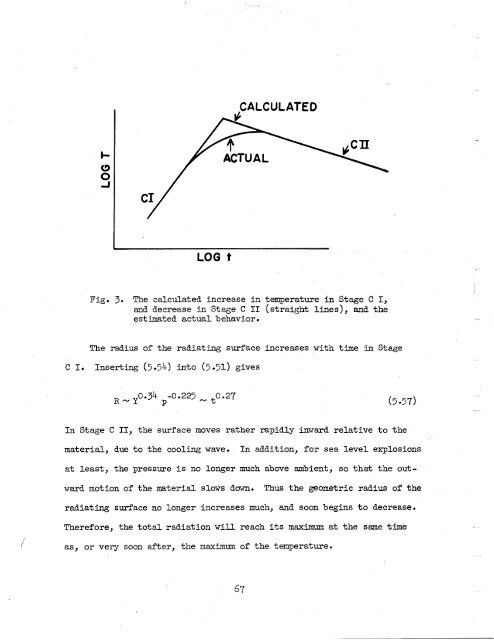Theory of the Fireball
Theory of the Fireball
Theory of the Fireball
Create successful ePaper yourself
Turn your PDF publications into a flip-book with our unique Google optimized e-Paper software.
f<br />
LOG t<br />
CALCULATED<br />
Fig. 3. The calculated increase in temperature in Stage C I,<br />
and decrease in Stage C I1 (straight lines), and <strong>the</strong><br />
estimated actual behavior.<br />
The radius <strong>of</strong> <strong>the</strong> radiating surface increases with time in Stage<br />
C I. Inserting (5 .?4) into (5.51) gives<br />
0.34 -0.225 t0.27<br />
R-Y P<br />
(5 057)<br />
In Stage C 11, Yne surface moves ra<strong>the</strong>r rapidly inward relative to.<strong>the</strong><br />
material, due to <strong>the</strong> cooling wave. In addition, for sea level explosions<br />
at least, <strong>the</strong> pressure is no longer much above ambient, so that <strong>the</strong> out-<br />
ward motion <strong>of</strong> <strong>the</strong> material slows dm. Thus <strong>the</strong> geometric radius <strong>of</strong> <strong>the</strong><br />
radiating surface no longer increases much, and soon begins to decrease.<br />
Tnerefore, <strong>the</strong> total radiation will reach its maximum at <strong>the</strong> same time<br />
as, or very soon after, <strong>the</strong> maximum <strong>of</strong> <strong>the</strong> temperature.
















